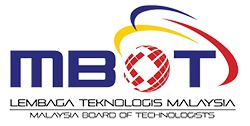Landfill Leachate Treatment Using Electrocoagulation
Keywords:
Electrocoagulation, Landfill leachate, Current density, Pollutant removal, Stabilized leachate, Wastewater treatmentAbstract
Landfill leachate, particularly stabilized leachate, presents significant environmental challenges due to its high pollutant load, including COD, BOD, ammoniacal nitrogen (NH₃-N), total suspended solids (TSS), color, and turbidity. Conventional biological and chemical treatments struggle to address the recalcitrant nature of stabilized leachate. This study evaluates a continuous flow electrocoagulation (EC) system as an alternative treatment method, focusing on the influence of current density on pollutant removal efficiencies. Experiments were conducted using a custom-designed EC reactor equipped with iron and aluminum electrodes, with current densities ranging from 10 to 40 mA/cm². Key operational parameters, including flow rate and hydraulic retention time, were optimized to simulate real-world landfill leachate conditions. Results revealed a direct correlation between current density and pollutant removal efficiency. At the highest current density of 40 mA/cm², the system achieved significant reductions in TSS (72.14%), color (33.85%), and turbidity (25.40%). However, lower removal rates were observed for COD (18.12%) and NH₃-N (19.27%), indicating the limitations of EC in addressing recalcitrant organic compounds and ammonia. The enhanced removal at higher current densities is attributed to increased coagulant generation and improved flotation and sedimentation processes. These findings demonstrate the potential of EC as an effective primary treatment for stabilized landfill leachate, particularly for reducing suspended solids, color, and turbidity. However, the moderate removal efficiencies for COD and NH₃-N suggest that hybrid approaches, integrating EC with complementary processes such as advanced oxidation or adsorption, are necessary for comprehensive pollutant removal.





